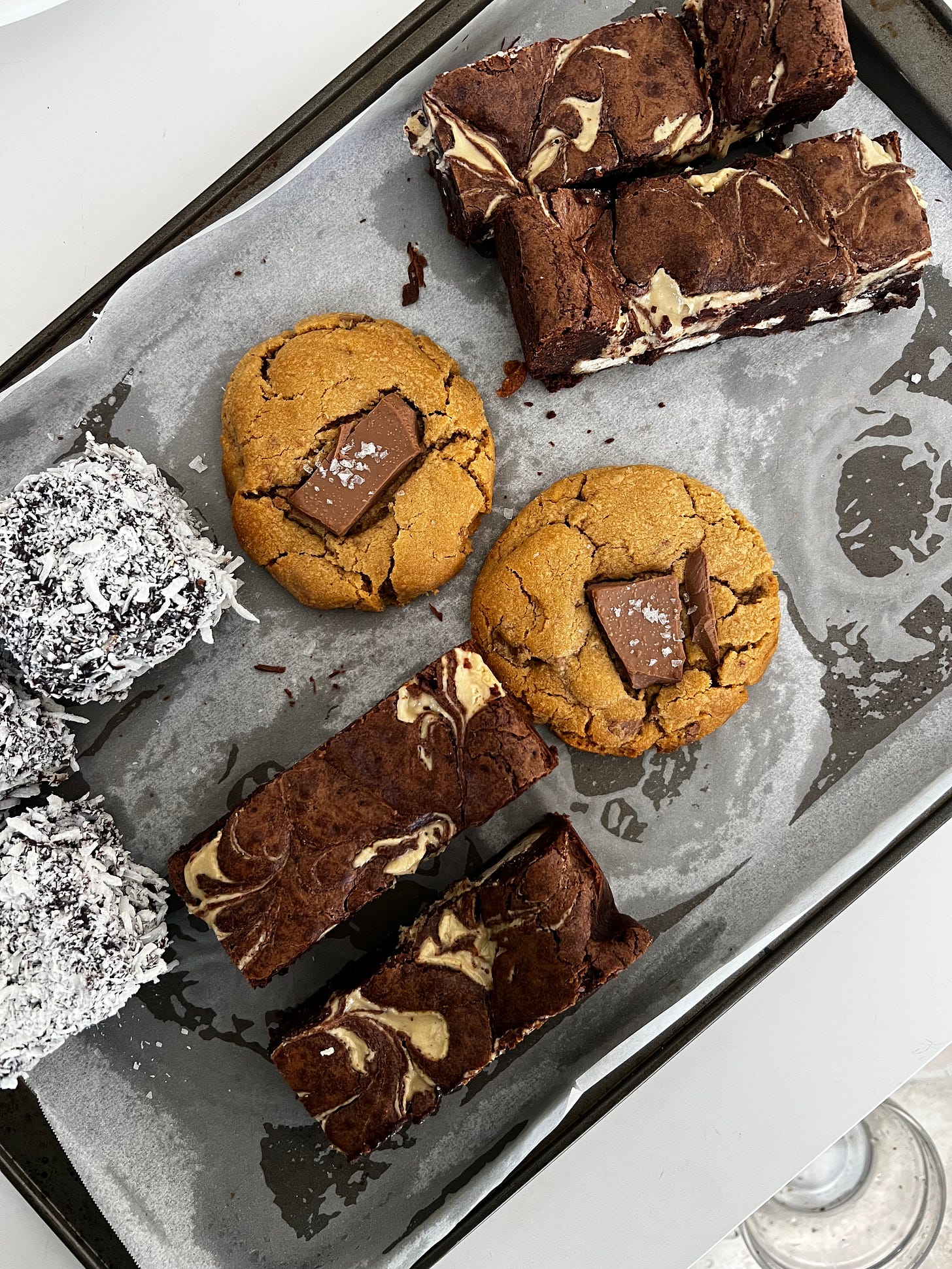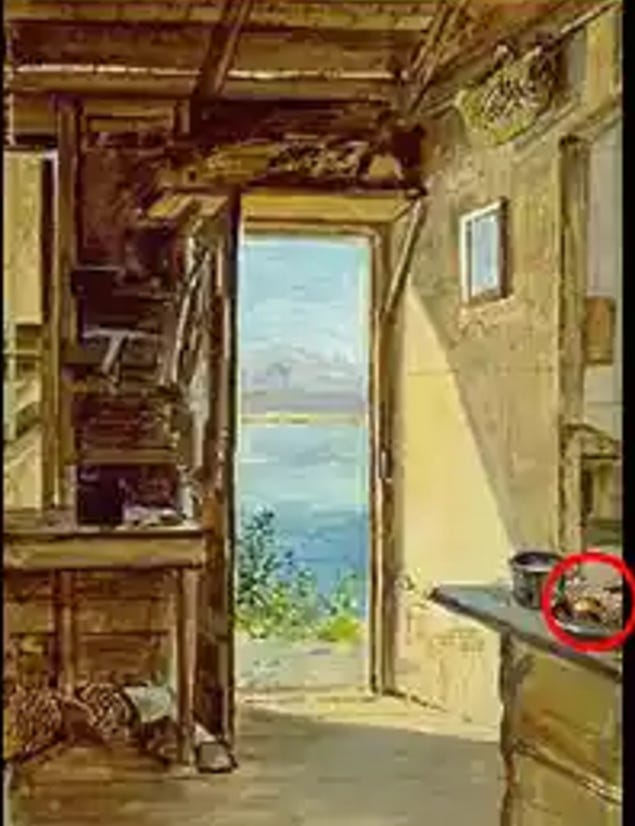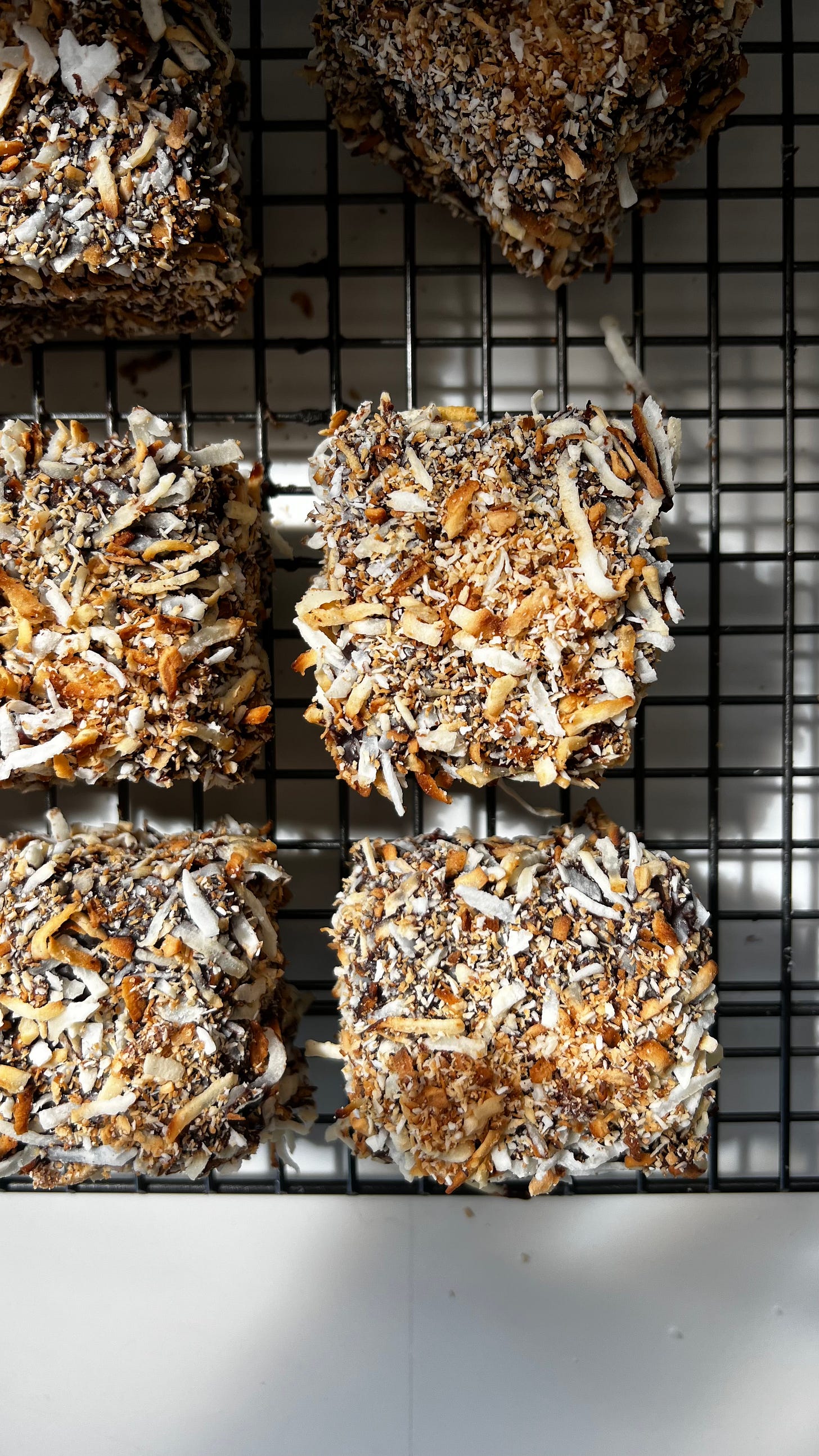What I’m reading: These Precious Days, by Ann Patchett. This is a collection of essays by one of my favourite authors, and was perfect reading material for various flights, as it’s easy to dip in and out of.
What I’m listening to: Pedro Pascal on SmartLess. This episode was such a treat - I’ve been a fan of Pedro (along with the rest of the internet) since watching Narcos years ago.
What I’m eating: everything in sight in Melbourne. I was seriously blown away by the food here - but special shout-out has to go to Lune (below). The almond croissant was perfection.
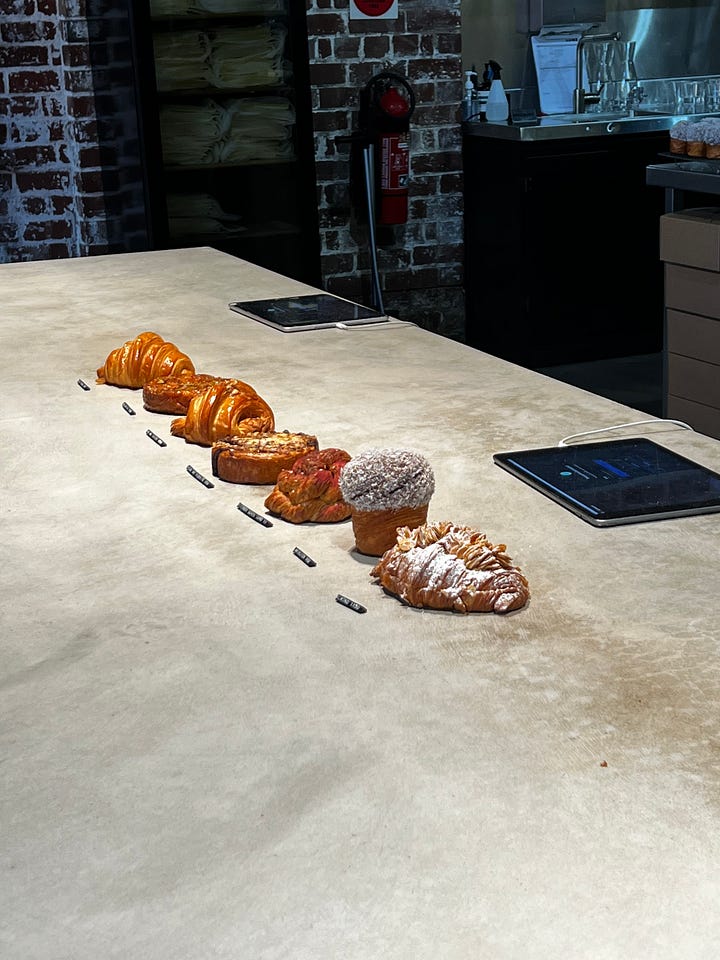
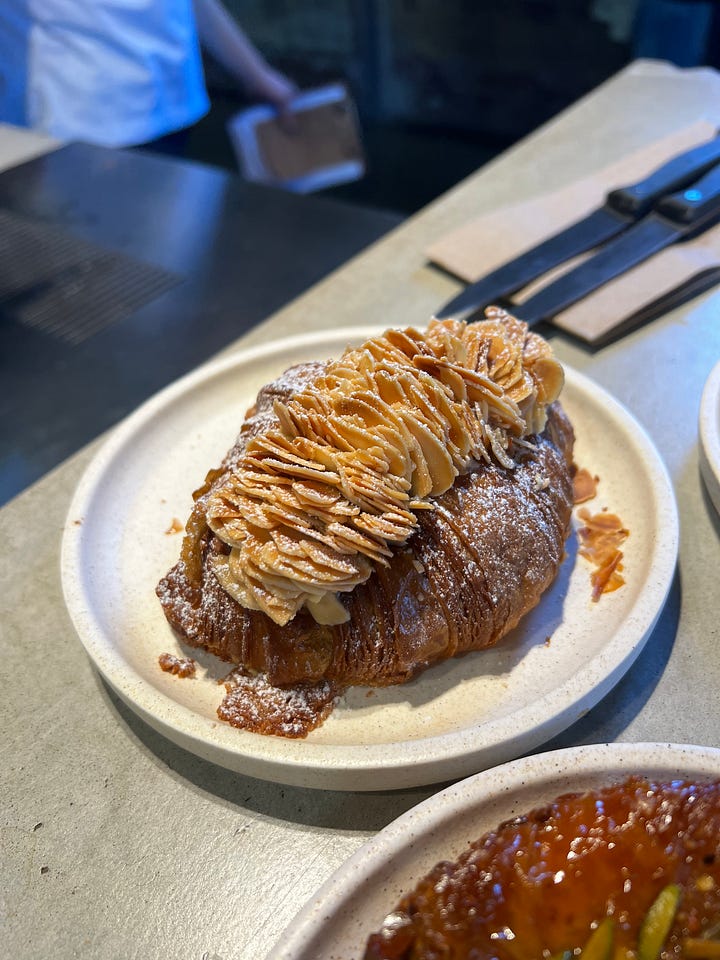
I’ve spent the last week hanging out with my friend Mary, who’s a pastry chef working at Librae in New York. We spent the weekend in Melbourne, before heading north to Sydney, and then spending the last few days in Bowral, a gorgeous town on the road to Canberra.
Mary and I lived together in London in 2020/2021, and we used to do a lot of baking in our tiny Clapton flat. Yesterday we decided to make the most of her parents’ wonderful kitchen here in Bowral and do some baking - Nicola Lamb’s peanut butter cookies, Ottolenghi’s tahini halva brownies (our fave), and finally a project I’ve wanted to do for a while: lamingtons.
I am endlessly charmed by lamingtons: perfect little cuboid cakes, adorned with coconut and filled with raspberry jam (which apparently is not traditional, but in my experience, frequently appears in contemporary lamingtons). It was a fairly straightforward recipe to develop: I opted for a chiffon/genoise hybrid for the sponge, whipped up some raspberry jam (which I promise you, only takes 10-15 mins!), and then did a simple choc glaze, which I used to adhere toasted coconut flakes to my darling little lamingtons. The recipe is below, but first a little background on the lamington.
A brief history of the lamington
We know that the lamington was named after Lord Lamington, the Governor of Queensland from 1896 to 1901. The first published recipe for the lamington appeared in a 1900 edition of Queensland Country Life, and in the years that followed, lamington recipes began to appear in newspapers and cookbooks, as well as becoming a key category in baking competitions at regional fairs. Lamingtons remain popular across Australia, appearing in bakeries and cafés, and even earning their very own festival (National Lamington Day, 21 July).
The history of the lamington is so complex and contentious that a (very serious looking) book was written by Maurice French in 2013, under the title The Lamington enigma : a survey of the evidence.
The Lamington Polemic: Australia or New Zealand?
I don’t want to get too much into this controversial topic (especially as I’m currently in Australia, and moving to New Zealand in three days) - but both Australia and New Zealand claim ownership of the lamington, and both have evidence in their favour. This isn’t the first Antipodean baked-good-related dispute I’ve come across - the pavlova is another one, if you feel like a good internet deep dive.
Australians point to the recipe published in Queensland Country Life in 1900 as irrefutable proof that the lamington originates Down Under. In my experience, lamingtons are widely attributed to Australia, and if you go looking for recipes online, you’ll find innumberable options on Australian blogs and in Australian cookbooks.
However, the plot thickens: Lord Lamington’s wife was from New Zealand, and some people say (including this article in the Guardian) that she brought the lamington (originally called a “wellington”) back with her in the late 19th century. Researchers point to the 19th century watercolour image below (painted by New Zealand artist JR Smyth) as further evidence that New Zealand bakers were the first to make this coconut-covered confection. I’m not sure how clear the lamington is in the image personally, but perhaps in person, it makes a stronger case?
Apparently the Lamingtons were quite taken with the “Wellington – a double sponge dessert, dressed in shavings of coconut intended to imitate the snow capped mountains of New Zealand” - so much so that they took it back with them, and allegedly claimed it as their own.
Recipe: a traditional(ish) lamington
I’m going to play it safe, and call this an Antipodean lamington (which is a new but very fun word for me). You could very easily play around with the layers here: marmalade instead of jam, potentially sesame seeds instead of coconut, or you could flavour the sponge if you like. I find that the vanilla/choc/raspberry/coconut combo works quite well, though.
Keep reading with a 7-day free trial
Subscribe to Tastebuds to keep reading this post and get 7 days of free access to the full post archives.





